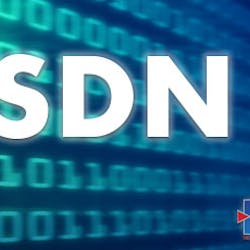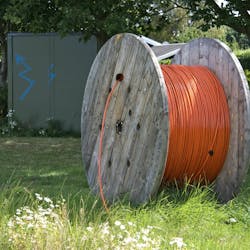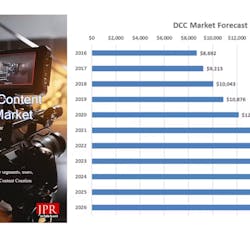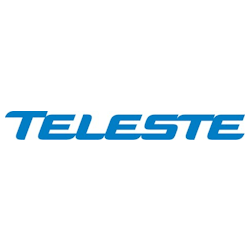As network service providers (NSPs) look beyond traditional revenue streams to address growing competition and changing customer expectations, new revenue generation opportunities are emerging from a powerful new source: programmatic advertising delivered via customer premises equipment (CPE) provided to homes by pay TV operators.
So say senior executives at Technicolor Connected Home, a global provider of next-generation CPE products and Hoppr, a business and technology platform provider that provides turnkey advertising solutions to pay TV operators, in an interview for journalists.
“NSPs have been exploring ways to leverage the analytics of enhanced user engagement to stimulate new monetization strategies to address the implications of the post cord-cutter market,” says Christian Lefebvre, Senior Vice President of Global CPE Video at Technicolor Connected Home.
“Targeted advertising that leverages CPE in the home without interrupting the viewing experience is materializing as an attractive means for pay TV operators to reclaim lost revenues with minimal CAPEX spending,” adds Hoppr Chief Executive Officer, Cyril Daoud.
New frontiers for expanding NSP profitability
While the prospects of being major players in the television advertising market may seem novel to many NSPs, there is growing interest from brands and advertisers to deliver tailored programmatic messages to connected home environments. These are audiences that can only be reached by pay TV operators. Moreover, the trend toward programmatic advertising via intelligent CPE is being spurred by new regulatory and technological developments.
“Several countries have recently made changes on the regulatory front that open up opportunities for advertising within the NSP ecosystem,” says Lefebvre. “In August of 2020, for instance, France changed regulations authorizing network operators to distribute video which is an immense development. Additionally, technological advances now enable NSPs to leverage open, intelligent gateways and set-top boxes to deploy highly targeted advertising to consumers in a non-intrusive manner.”
These trends are contributing to the industry’s efforts to replace legacy CPE — which are typically based on complex Linux-based operating systems that are expensive and difficult to modify — with open platforms that are more powerful, configurable and responsive to changes taking place in the business landscape.
“The new generation of CPE that Technicolor brings to market provides the flexibility, intelligence and security needed to help NSPs implement effective and highly profitable programmatic advertising strategies,” explains Lefebvre.
Beyond an ad-tech solution: A programmatic business platform
There is a growing set of solutions that have recently become available to NSPs seeking to implement programmatic advertising strategies. The challenge, however, is that many of these ad-tech offerings only address technical and low-level management issues. NSP executives — who may be unfamiliar with the dynamics of the advertising business — are left to fend for themselves to create and integrate a community of brands and advertising agencies that results in an effective, efficient and profitable value chain.
“In addition, many of these ad-tech solutions require CAPEX investments and/or a dedicated content delivery network which require resources and maintenance to support dedicated advertising servers,” Daoud explains.
“Hoppr has taken a different approach. We have already developed a community of brands and advertisers who are eager to reach connected home audiences. We have designed a value proposition that is ready-to-go with operators that have focused primarily on delivering triple-play services — phone, video and broadband services,” says Daoud.
The combination of Technicolor Connected Home CPE with Hoppr’s flexible and scalable solution does not require NSPs to engage in any major redesign of current network architectures or business processes. The Hoppr solution is lean, flexible and pre-certified to work with Technicolor Connected Home STBs. This makes it possible to implement advertising initiatives — and generate brand new revenue streams — within a 24-hour period.
“Operators that have deployed STBs in the field are capable of initiating advertising programs by simply executing a software update. It can be massively deployed — and monetized — rapidly with no additional CAPEX requirement,” says Daoud.
The integration and deployment of this next generation solution is the result of close collaboration between Technicolor Connected Home and Hoppr -- an early entrant to Technicolor’s HERO Partnership Program.
“The ultimate goal is to deliver seamless connectivity and premium experiences to consumers. This can only be achieved by creating best-in-class CPE and partnering with the most innovative companies in the connected home ecosystem,” concludes Lefebvre.
To read the entire Q&A visit: https://connected.technicolor.com/programmatic-advertising-will-play-a-growing-role-in-nsp-margin-expansion.








